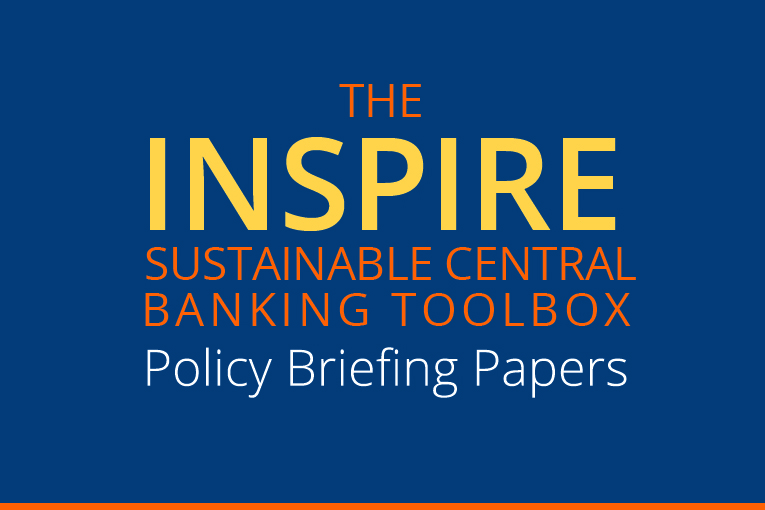Enhanced scenarios for climate stress-tests

Download
INSPIRE Sustainable Central Banking Toolbox – Policy Briefing No.16
Climate stress-tests are a powerful tool to quantify the exposure of financial institutions to climate financial risks. Scenarios play an important role in stress-tests, but those often used today do not account for endogenous factors, such as the response of the financial system. This could in turn lead to the underestimation of climate risks and missed opportunities for climate change mitigation.
This paper explores how a newly developed methodological framework for enhanced climate stress-tests can be used by central banks and financial supervisors to inform the design of prudential measures.
Main messages
- Several central banks and financial supervisors across the world are in the process of assessing climate risks for the banks and financial institutions under their supervision through exercises referred to as climate stress-tests (or climate scenario analysis in some cases).
- Climate stress-tests build on the traditional stress-test by integrating climate financial risk, in the form of both physical and transition risks, to help financial institutions to assess and manage climate-related financial risks. These are often based on scenarios developed by the Network for Greening the Financial System (NGFS).
- However, these climate scenarios are constructed without accounting for the role of the financial system and, in particular, the interplay between investors’ expectations, policy credibility and risk materialisation.
- To overcome this limitation, the NGFS scenarios can be enhanced using a methodology that captures the key role of investors’ expectations, policy credibility and risk assessment within the realisation of the scenarios.
- Climate stress-tests can support a robust assessment of climate financial risks, which is fundamental to informing financial supervisors about incorporating climate risk considerations into macroprudential regulations. Whatever prudential regulations are introduced, three points should be considered:
- The analysis of financial institutions’ exposures to climate risk should extend well beyond the firms directly involved in fossil fuel extraction. Profitability losses could occur along the whole value chain of fossil fuels.
- A lack of coverage and comparability of disclosures of carbon emissions limits the ability to assess exposures to transition risk solely based on carbon emissions. Firm-level information can be complemented with other firm-level data such as their production plants, business model and sensitivity to changes in climate and energy policies.
- Climate risk metrics and measures should be transparent and peer-reviewed to rule out the possibility that important sources of risk are neglected.
This paper is part of the INSPIRE Sustainable Central Banking Toolbox, which is designed to support central bankers and financial supervisors in calibrating monetary, prudential and other instruments in accordance with sustainability goals as they address the ramifications of climate change and other environmental challenges. The papers have been written and peer-reviewed by leading experts from academia, think tanks and central banks and are based on cutting-edge research, drawing from best practice in central banking and supervision.

